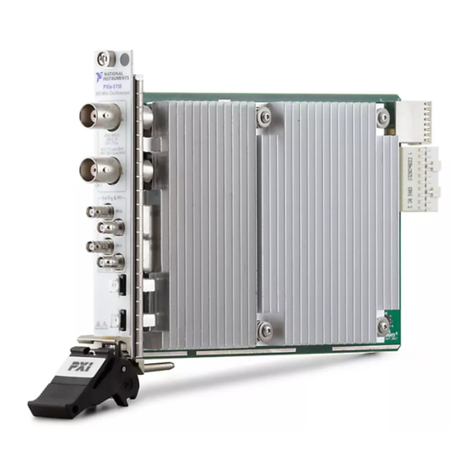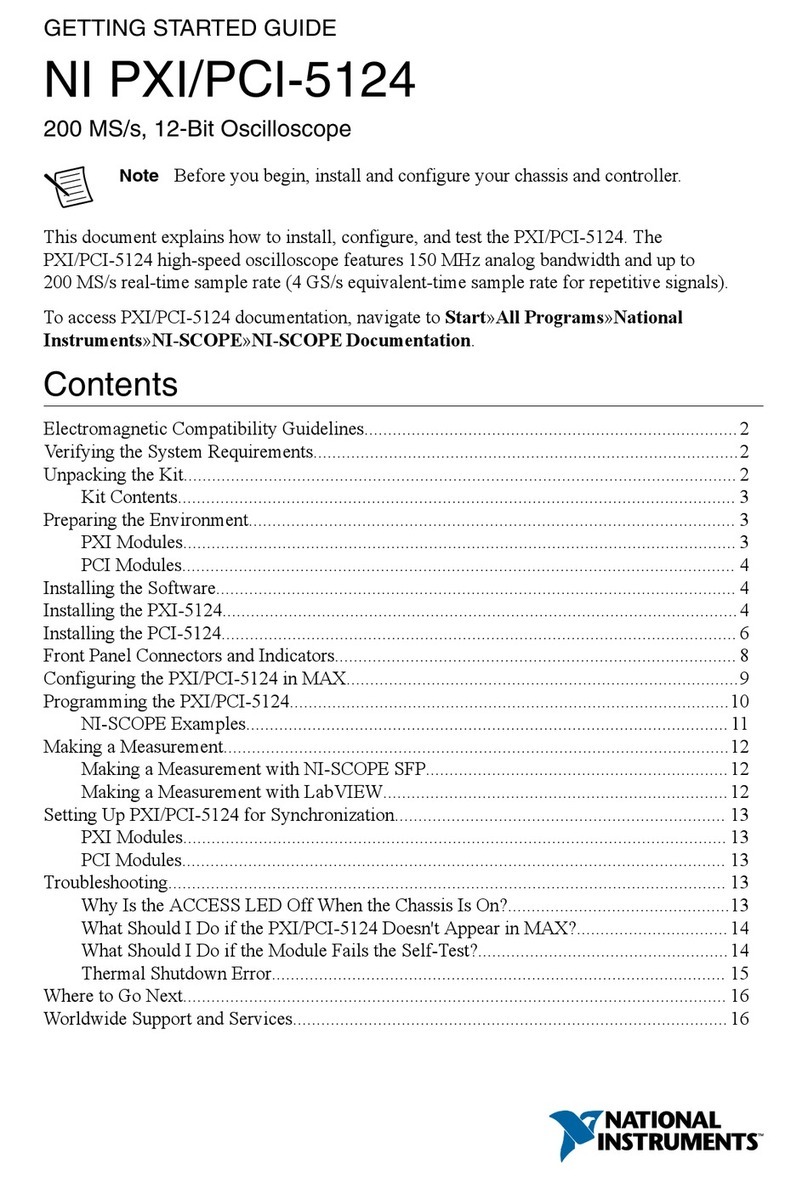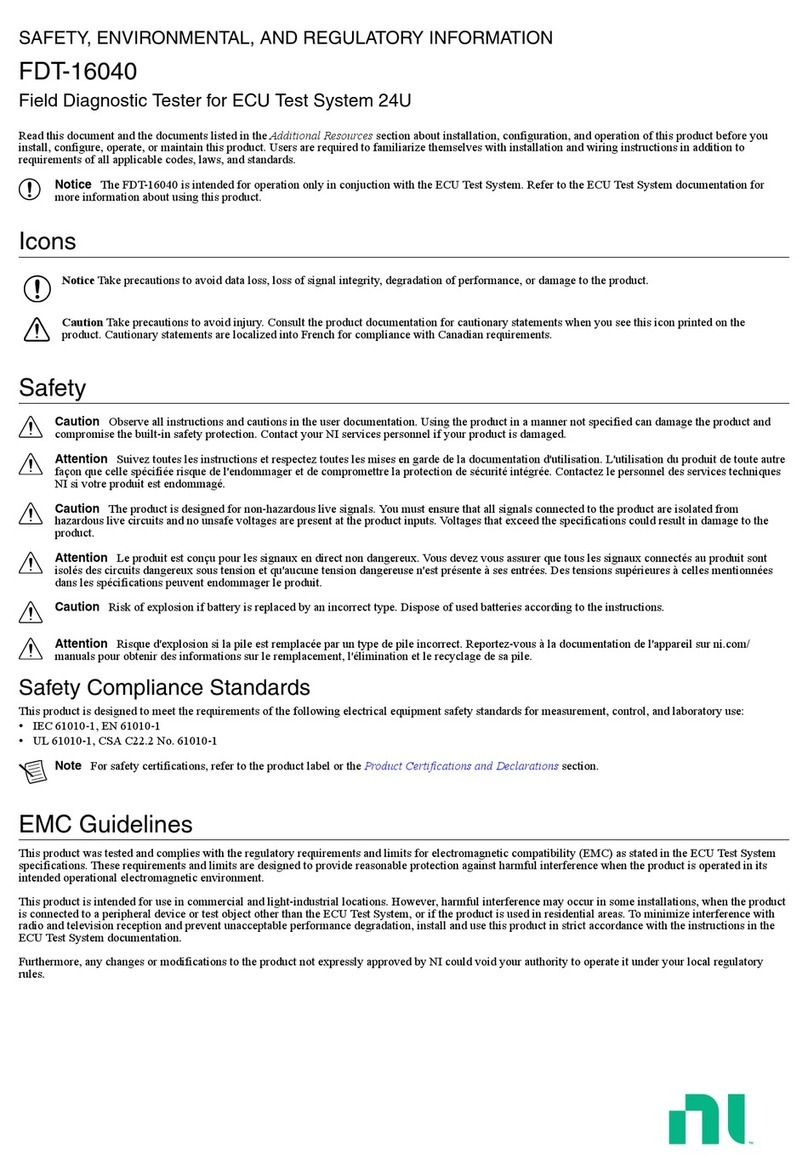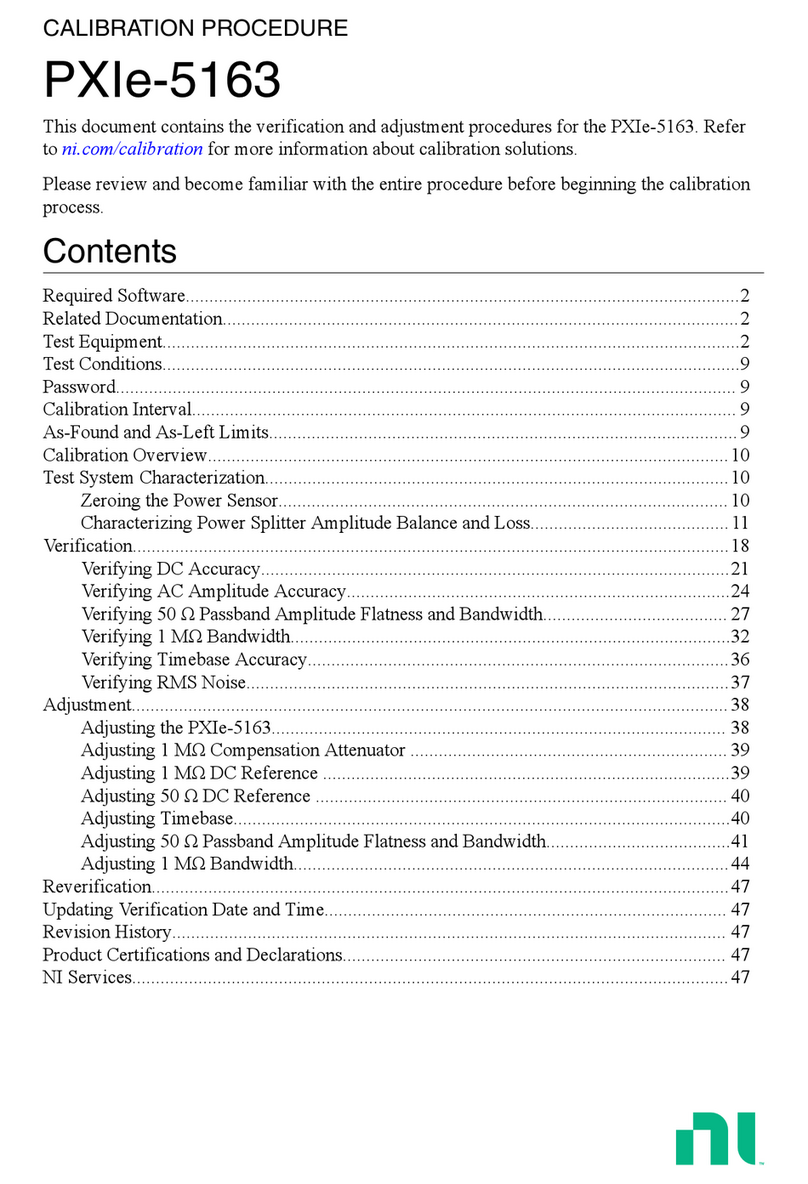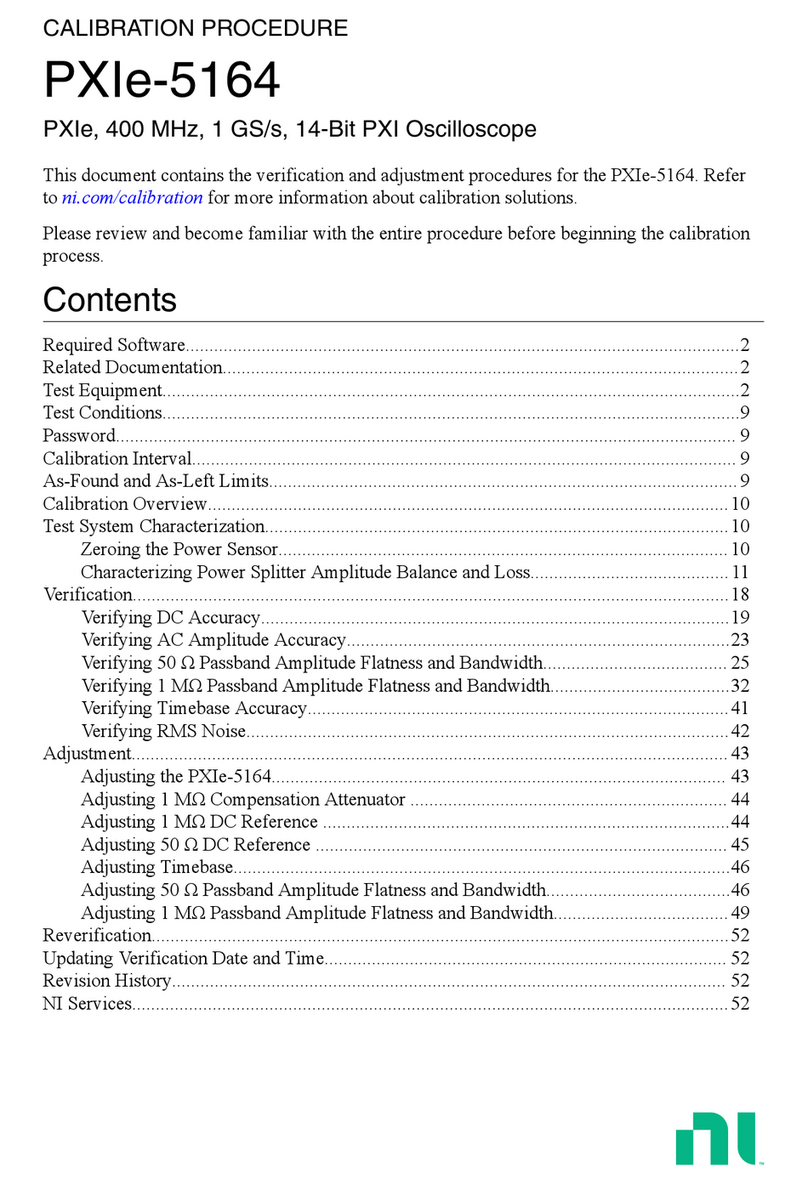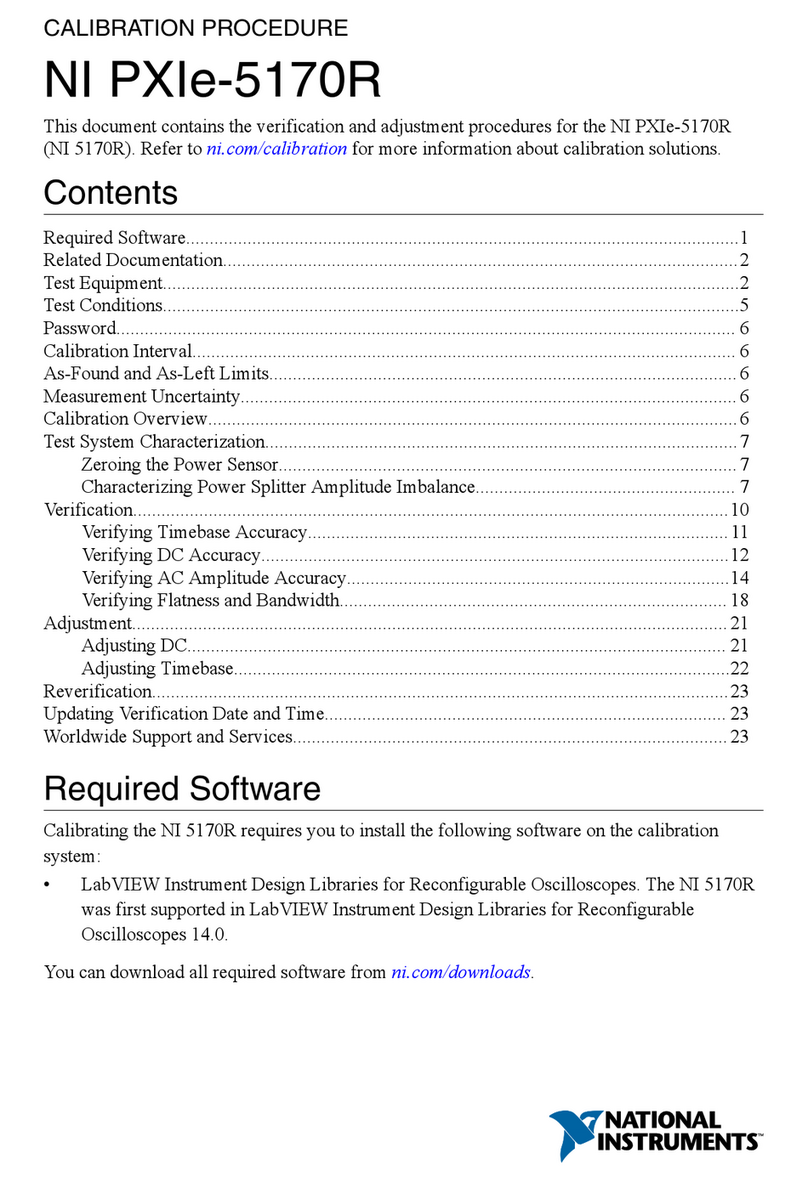
CALIBRATION PROCEDURE
PXIe-5111
This document contains the verification and adjustment procedures for the PXIe-5111. Refer to
ni.com/calibration for more information about calibration solutions.
Contents
Required Software.....................................................................................................................1
Related Documentation.............................................................................................................2
Test Equipment..........................................................................................................................2
Test Conditions..........................................................................................................................4
Password................................................................................................................................... 5
Calibration Interval................................................................................................................... 5
As-Found and As-Left Limits................................................................................................... 5
Calibration Overview................................................................................................................5
Test System Characterization....................................................................................................6
Zeroing the Power Sensor................................................................................................. 6
Characterizing Power Splitter Amplitude Balance and Loss............................................6
Verification................................................................................................................................9
Verifying DC Accuracy...................................................................................................11
Verifying 50 Ω Bandwidth.............................................................................................. 17
Adjustment.............................................................................................................................. 22
Adjusting the PXIe-5111.................................................................................................22
Adjusting 1 MΩ Compensation Attenuator.................................................................... 22
Adjusting 1 MΩ DC Reference.......................................................................................23
Adjusting 50 Ω DC Reference........................................................................................ 24
Reverification..........................................................................................................................24
Updating Verification Date and Time..................................................................................... 25
Worldwide Support and Services............................................................................................ 25
Product Certifications and Declarations................................................................................. 25
Required Software
Calibrating the PXIe-5111 requires you to install the following software on the calibration
system:
• Compatible version of the NI-SCOPE instrument driver. NI recommends you use the
latest version of NI-SCOPE for external calibration.
• Supported application development environment (ADE): LabVIEW
You can download all required software from ni.com/downloads.













